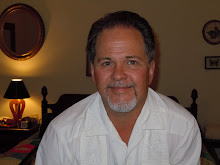Tuesday, December 08, 2015
The D.T.'s (NYPD Blue cameraman withdrawal) creates the "Third Tangent"
Joel and Ethan Cohen's collaboration with director and producer emeritus Steven Spielberg "Bridge of Spies" was slow to start. Starkly it reminded me of the slow start of the film "The Cheap Detective," when I saw it one cloudy summer afternoon at the beach in Wilmington, North Carolina. It was so slow to start my father insisted we leave, and we did. (It was not until recently I understood its angle, and I liked it immensely.) During the first half hour of this newly released, Cold War, reflection film, I asked myself several times why I was watching such a thing. I came to terms with this newer style of cinematography. Back in the day of Jimmy Smits seemingly a lone cameraman filming "NYPD Blue" inadvertently implemented instead of steady-cam filming a "jittery-cam" filming. Clearly I remember it. What sould have been a normal scene from a crime/drama television episode suddenly grew a new tangent. It was mute, inhuman, and scurried around like Gollum in "Lord of the Rings." It viewed the actors drama from the viewpoint of a midget. I learned in my summer school course "Stagecraft" lighting actors from below creates a demonic effect. Our sun does not emanate up from hell, so actors should not be lit this way except in specific scenarios depicting demonic content. Unfortunately ground-level lighting and a cameraman's jittery hands have become commonplace in television and film production for no legitimate reason. [sic] This practise created a new tangent, an undesirable character like Uncle Eddie in the National Lampoon film "Christmas Vacation." His sole purpose is to create chaos, chaos we observe the actors mitigate into a viable entertainment. Utilizing a "third-party" antagonist which is not an actor, not human, and is invisible is a weighty production decision. Its name is Rupert Murdoch [sic] and his committee is the media. The song title "Wannabee," a hit by the spice Girls, a quintessential metaphor. We have quality, studied, historically-based film making dating back to the 1920's. It was heralded like art, music, poetry, prose, and painting. Today music like film and television production has included a similar unimportant tangent. It is today's audience. That is what you see now on television music programs. Like today's acting on many occasions the live performance of music is subordinate to the audience. It is inconsequential. The third tangent also can be lighting, theme music, and artificially created tension and release. This is best represented in the better produced reality TV shows and now is common. The talent doesn't really matter, or at least the producers extract what is necessary from the untrained participants. What less expensive way is there to produce watchable television programing!? Exploit everyday people like jazz musicians who seek their fortune. Give them malaria, botulism, and diphtheria, buy their songs, and whisk them off the set like a post-surgical patient. Buy their standard wares and watch them die at the bottom of a whiskey bottle while you make your fortune. This exploitation can be the same for lottery winners. Many do not have the front money to cover the taxes on their winnings, so they do not receive anything. (Scam.) The third tangent isn't necessarily Big Brother. Instead it should be Little Brother. It is a chimpanzee, or at least the intellectual intent and resulting product of a lone monkey running around the set with a hand-held camera. Igor running around the set of "Young Frankenstein" was effective and humorous! You could see him, and he was a viable part of the action. I watched "Bridge of Spies," and began to like it more as it progressed. I had to tell myself I was watching the close up war footage of "Saving Private Ryan" and and current film making technique whether I liked it or not. I'm not sure it is effective. There are multitude of traditional war-themed movies which have been comfortable planting the camera on traditional mounts like dollies, cranes, helicopters, and tripods, and simply watching the actors' craft. (Mr. Spielberg also utilizes these techniques) Many of these expertly-shot films are worthy of accolades. With the concerted ignoring of necessary components of good film production, albeit for financial constraints, this third tangent (or its representing committee) is used to try and salvage a film. If I wanted to watch a monkey (Rupert Murdoch) with a camera instead of Martin Scorsese, Paul Verhoven, Adrian Lyne, or Sydney Pollack I would not watch at all. I could understand if the third tangent, a pair of tremulous hands caused by delirium tremens needed his paycheck, but unlike jazz improvisation this aberration of filming adequately has not been justified, studied, and appropriately integrated into film technique. It is an unsuccessful contrivance. Is it intended to be modern? Is it intended to be Post-Modern? Is filming worthy actors, meticulously-constructed sets, innovative lighting, and digitally-recorded sound by a cartoon creature from the "Lord of the Rings" really an appropriate avenue for film-making in the century 2000? Just as the internet, wireless communications, and the media are slinging their guns and forging new territory in the wild west of current America, I choose to look backwards whence film came. This is proof in the pudding. It is proof that human beings still are trying to watch films though difficult as some studios are making it by utilizing the shortcut of digital rendering. Shooting from the perspective of and reducing us to neurotic, delusional, ADD riddled adolescents may be a way to grift allowances from the pockets of America's youth, but like Wall Street's digressions it does not make it moral or ethical. If the "Third Tangent" eliminates Christianity, no one can know the difference. Who knew Agnosticism in film and television had become the new "Twelve" in America?
